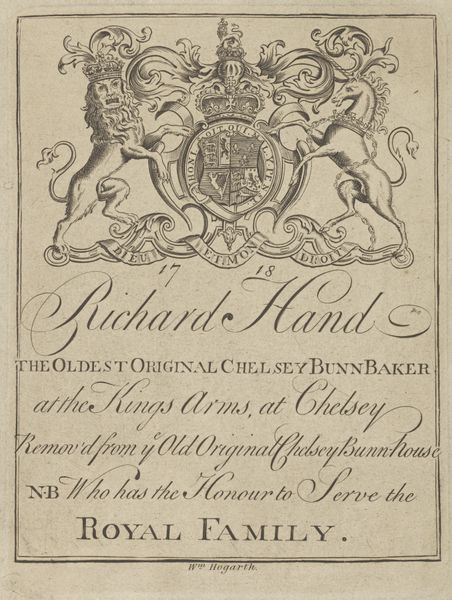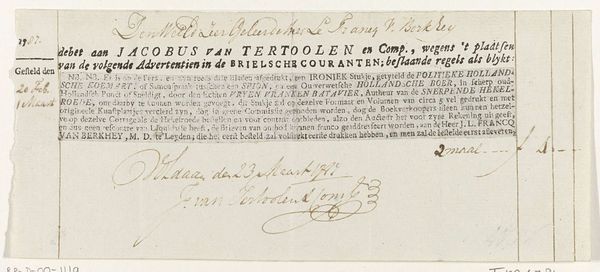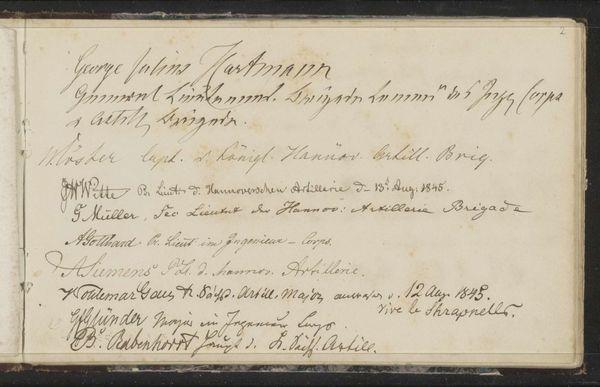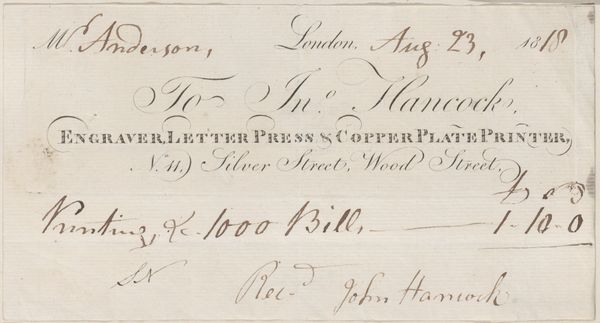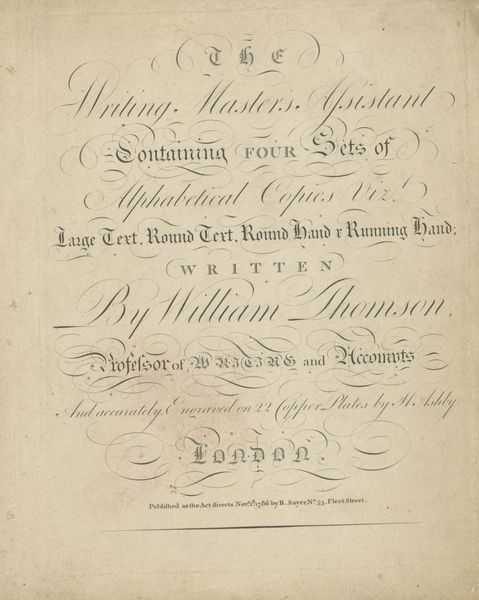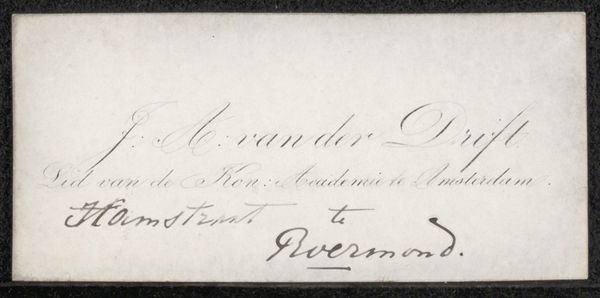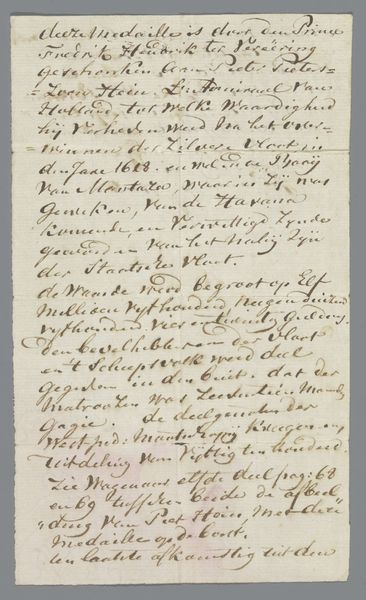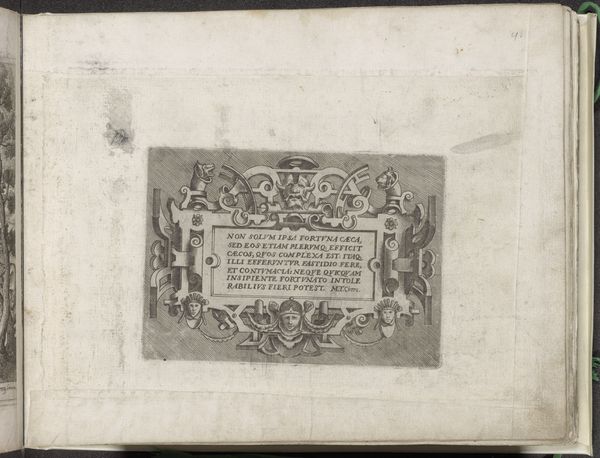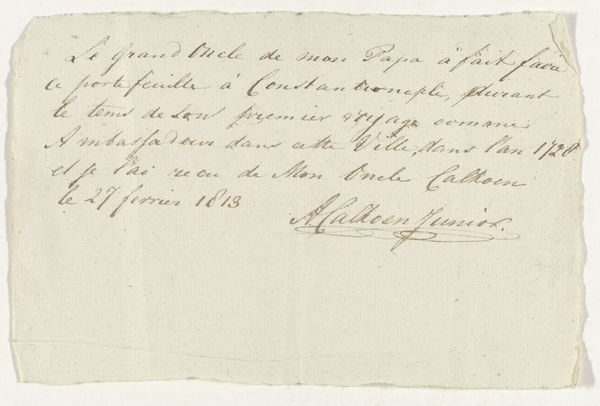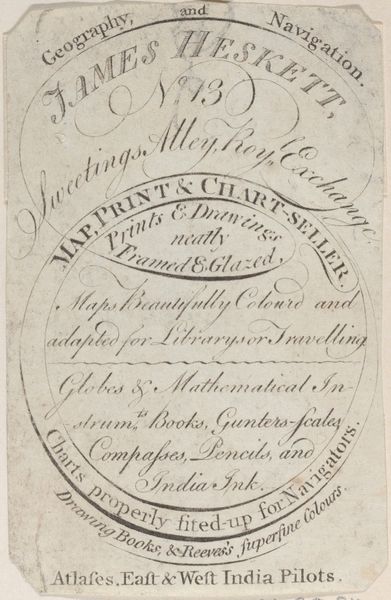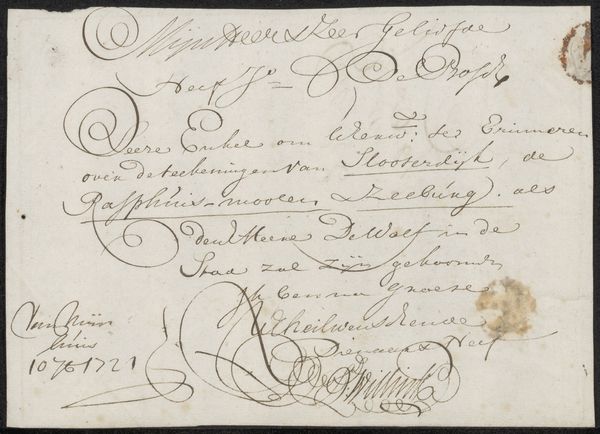
drawing, print, etching, textile, paper, typography
#
drawing
#
medieval
# print
#
etching
#
textile
#
paper
#
typography
#
decorative-art
Dimensions: Sheet: 4 3/16 × 6 3/16 in. (10.6 × 15.7 cm)
Copyright: Public Domain
Curator: This printed book label, designed for Mrs. Judith Hackam, dates roughly from 1731 and exemplifies decorative art with its intricate design elements and typography printed on paper with etching. What strikes you most when you first see it? Editor: The scale is deceptive—I’m initially drawn to the texture, like faded linen or textile rather than just paper. The weight of its materiality really evokes a sense of handling and age. Curator: Absolutely. And what layers are presented by its existence, the claim of ownership embedded in it, who Mrs. Hackham and Richard Hill might have been, as suggested by the placement of their names, can we speak of literary authority in the 18th Century? Editor: It certainly shifts my focus from solely aesthetic consideration towards issues of craft, ownership, and, perhaps, privilege as associated with reading and book ownership. I’m curious about the Clarendon Printing-House’s operations at that time; what did it mean to brand oneself as their customer? Curator: Precisely. The label intertwines personal identity with a larger socio-political narrative involving the distribution of printed materials and knowledge. Considering Mrs. Hackam as a reader also complicates our understanding, does it speak of status, accessibility, of even gender empowerment. Editor: I agree; examining its context illuminates not only printmaking technologies but also the socio-economic structures shaping consumption and literacy, especially as it touches upon questions of identity and belonging to literate culture. Curator: Indeed, it goes far beyond mere ornamentation; it signifies cultural shifts in literacy, the development of personal branding and the complex narratives surrounding reading, especially when viewed through feminist lens. Editor: Analyzing this book label as more than decorative but a signifier of Mrs Hackam's involvement in cultural and economic systems of knowledge broadens the context through which we can see materiality influencing the narratives present and how materials help define one's placement within those narratives. Curator: Ultimately, such inquiries bring richness of perspective, it goes beyond just design considerations of typography, which brings broader socio-political meaning embedded. Editor: Exactly; understanding this humble object within its production chains expands how we connect this era and see materiality being bound to identity in many forms.
Comments
No comments
Be the first to comment and join the conversation on the ultimate creative platform.
